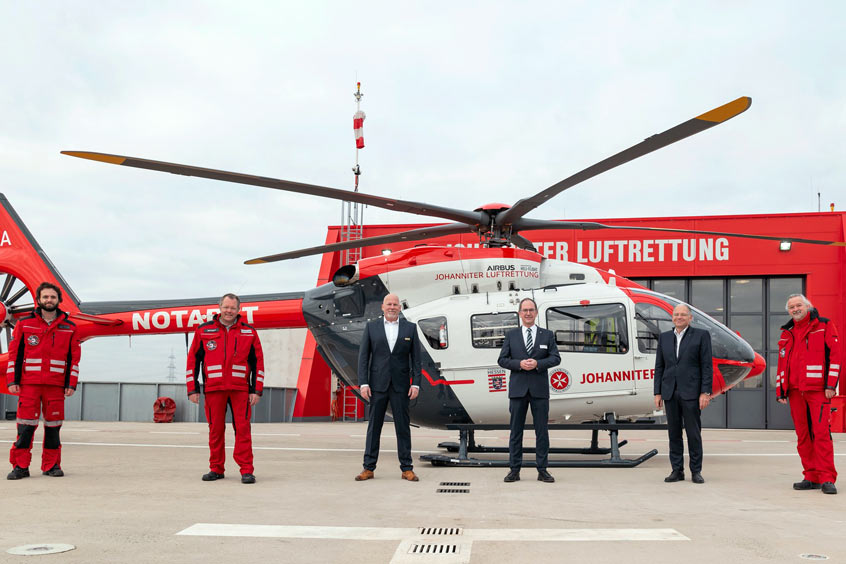ACE 2026 - The home of global charter.
 The bimonthly news publication for aviation professionals.
The bimonthly news publication for aviation professionals.

With the arrival of an Airbus H145, German aeromedical service Johanniter Luftrettung (JLR) has expanded its fleet. The smaller, lighter and quieter machine has an autopilot system and five rotor blades instead of the usual four; these ensure a more stable position in the air, which is beneficial for the patient. State-of-the-art technology is built into the machine and the interior layout has also been revised to enable the emergency doctor to work more flexibly during the flight.
In the presence of clinic director Professor Dr Michael Sander, senior physicians Professor Dr Simon Little and senior physician Dr Alexander Schlier, who work in the Clinic for Anaesthesiology, Operative Intensive Care Medicine and Pain Therapy of the University Clinic Giessen and Marburg GmbH in Giessen, as well as emergency doctor and medical director of JLR Dr Mumi Taleb, Dr Christoph Ullrich, district president of the Giessen District Council, the approval authority for air rescue in Hesse, personally activated the machine by inserting the radio chip. After numerous training flights, the white and red H145 with anthracite-coloured rear end and the identification D-HJLA will now go into action as Christoph Giessen.
With increasing utilisation of intensive care beds in German hospitals, the intensive care transport helicopter (ITH) will carry out transfer flights for intensive care patients together with neighbouring ITH Christoph Mittelhessen, but at the same time will continue to be used for rescue operations in accordance with the order.
Less than an hour after activation by the district president, the time had come: an assignment for secondary transport came – an intensive care patient was to be transferred from Winterberg to another clinic.
Dr Little, medical director at Giessen air rescue centre and onboard as an emergency doctor for the first time, explains: “In addition to rescue missions, we fly with Christoph Giessen, in particular, for intensive transfers from clinic to clinic. These missions can usually be planned and are less time-critical because the patient is already receiving care. The new technology is an excellent support for the entire crew, the flight feels good and the design of the interior means that patient care is very efficient. In the H145 we use the most modern redundant ventilation technology as well as a roll-in carrying system that has so far only been installed in this helicopter in civil air rescue.”
The German federal states are divided into five so-called shamrocks, each of which is coordinated at a central point. The central offices are in regular contact and coordinate with each other. If, due to an overload situation in a region, hospitals can no longer admit intensive care patients and regional structures are so busy that it is no longer possible to transfer intensive care patients to neighbouring regions, patients are transferred to less busy regions. The concept was developed by the federal government, the federal states and intensive care physicians in order to be able to relocate COVID-19 intensive care patients from regions with a high infection rate to regions with capacity. “With the additional machine, we can carry out intensive relocations according to the cloverleaf principle without having to detach a helicopter from its regular service. In addition to our fleet, we are also expanding our range of services to help relieve the locally very tense situation in the intensive care units with additional transfer flights,” explains Oliver Meermann, state director in the Hesse/Rhineland-Palatinate/Saar regional association of Johanniter-Unfall-Hilfe eV and managing director of JLR.